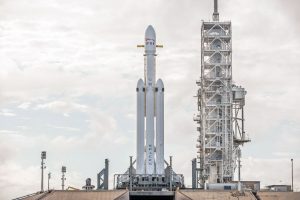Spanning the breadth of research being carried out today, Research Features Issue 148 highlights fascinating projects, from overcoming the bottleneck in optical data transfer to reusing dairy leftover to create fertiliser. We’re also taking a look at SCARU – an academic unit that’s generating evidence to advance our understanding of self-care.
A call for transdisciplinary frameworks for sustainable development means that we may be able to achieve the UN’s Sustainable Development Goal 11 of providing access to sustainable, affordable housing for all, while a DNA ‘metabarcode’ is leading the way in scanning for environmental biodiversity. And in other research, we discover that meteorites are more than cool rocks – they might even hold the secrets to our Solar System.

The need for speed: Overcoming the bottleneck in optical data transfer
Although high-speed communications have improved, optical signals for super-fast connections haven’t quite reached our mobile devices – yet. New optical modulators – that operate at visible light and not conventional infrared light – might mean we’re moving beyond 5G networks.
Imperial SCARU: Inspiring an evolutionary leap in healthcare
Healthcare systems are struggling to cope with the increasing rates of non-communicable diseases like diabetes and cardiovascular diseases. A team at Imperial College London put forward the case for self-care to alleviate some of the pressure.

The future of agricultural sustainability: Dairy leftovers as crop biostimulants
Creating a circular, green economy needs innovative approaches, and one possible solution is to re-evaluate the way we view industrial waste. One researcher is using dairy fermentation byproducts to create a new organic biostimulant, reducing our reliance on synthetic fertilisers and promoting sustainability in crop growth and yield.
Exploring interdependencies and synergies to meet Sustainable Development Goal 11
Achieving the UN’s Sustainable Development Goal 11 – making human settlements safe and resilient – seems a challenging goal, particularly in developing nations with low-income housing. A transdisciplinary framework may support the drive to meet this goal.

eRNA metabarcoding: Scanning the future of biodiversity
The complex and time-consuming task of assessing a habitat’s biodiversity is being simplified by scanning the eRNA ‘barcode’, helping us evaluate and achieve our nature-positive goals. A recent discovery, metabarcoding, allows researchers to assess species composition by scanning its DNA or RNA. This can be taken one step further to assess an environment by scanning the eRNA.
Eyes on the sky: Meteorites unlock clues to the mysteries of the Solar System
Meteorites hold a wealth of information, but only if we are able to find them quickly enough and before they are contaminated by Earth’s environment. New analysis of Martian meteorites reveals intriguing discoveries about the Solar System, including the history of water on Mars.





